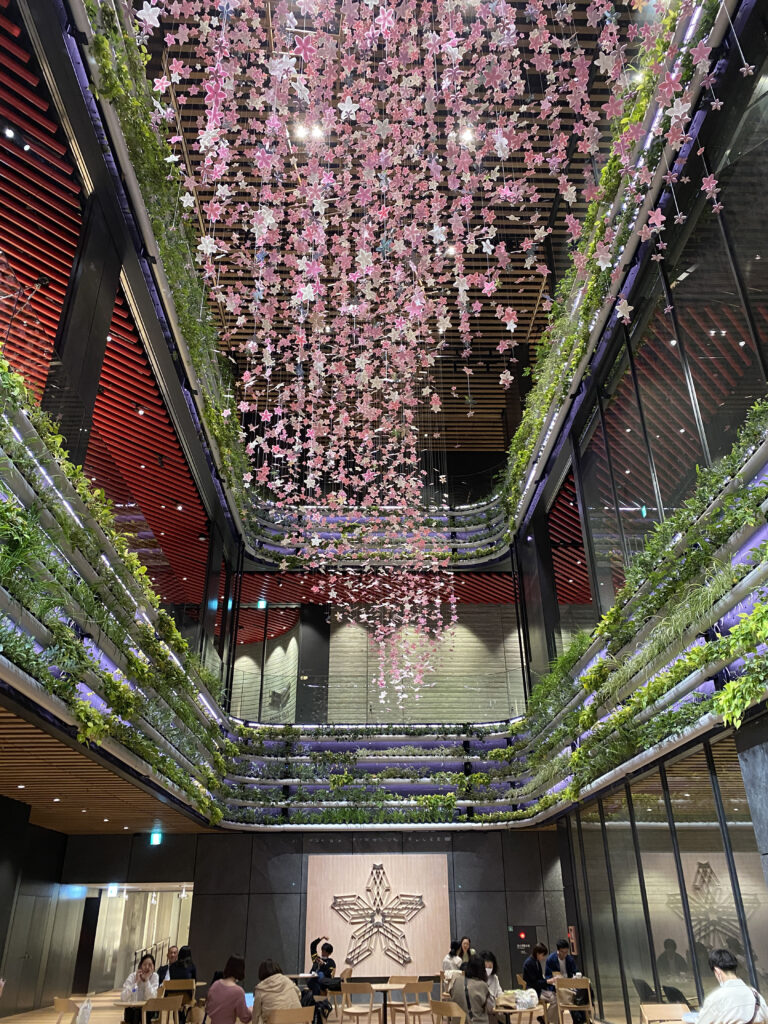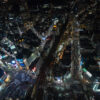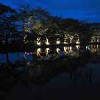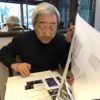2023.03.24 & 04.21
Satoshi Tamura+ Amane Kotani+ Noriko Higashi+ Shouya Koizumi+ Moana Osakabe+ Hina Inagawa
The first Lighting Detectives activity of 2023 was a night walk survey in Yaesu, where Midtown Yaesu opened in March and large-scale development is planned for the future. They documented the pre-development area and at the same time looked around the new light environment in the area where development is underway. Mr. Suzuki of the Honda Foundation, whose building is scheduled for demolition, joined us on the survey and explained the history of the area and the Honda Building.
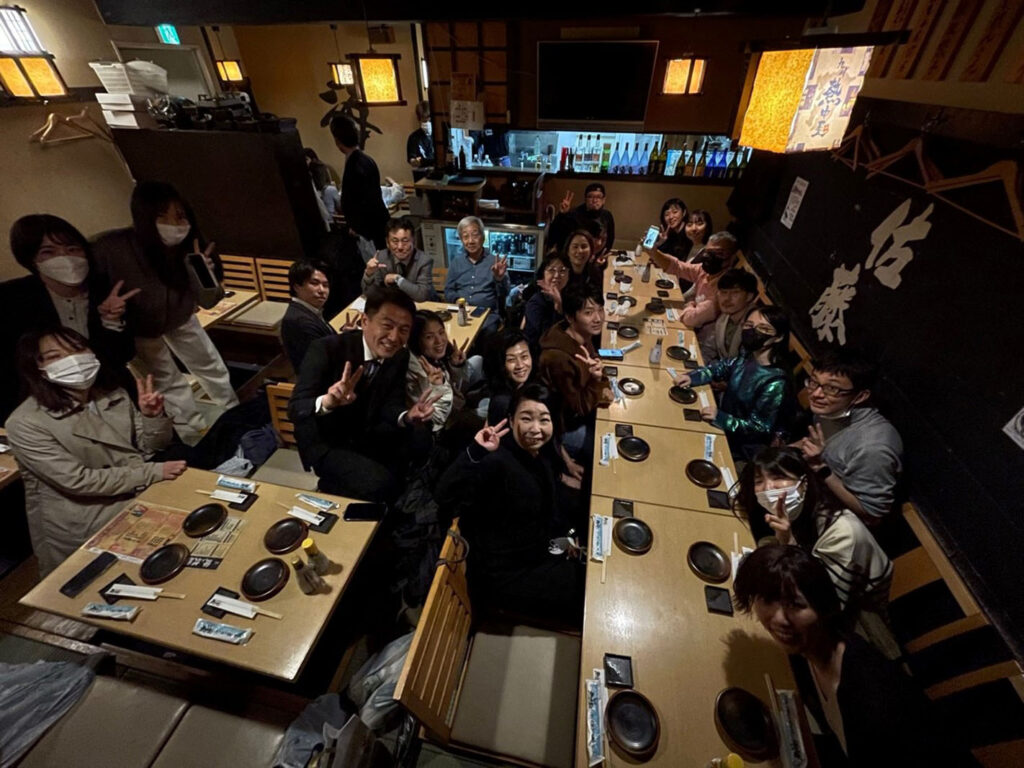
■ Group 1: North side of Yaesu Street
Group 1 toured mainly the north side of Yaesu Street. Although many areas were surrounded by temporary fences and inaccessible during redevelopment work, we were able to see the old drinking area and old buildings that were in use before the redevelopment. Although there were some villains in the old buildings, the drinking area was unanimously voted as a hero for its nostalgic impression with a moderate brightness of 55lx, 4,500K. The majority of the participants were of the opinion that they would like this townscape and atmosphere to remain in Yaesu after the redevelopment.
The greatest hero of the day was the rows of cherry trees along Sakura-dori Street. We were able to walk under them just as they were in full bloom on the day of night walk survey. Here, temporary lighting was installed later and the street lights were turned off, and although we could see the efforts being made to light up the cherry blossoms beautifully, it was debated there could be a better way to illuminate them. In some places, the surrounding environment such as road signs were unexpectedly bad, and we felt the
difficulty of lighting up natural objects. Some people also commented that it was good that the street lights were unified for each street. However, it was a little disappointing that many of the new street lights, which will become the symbol of the city in the future, had spotlights that illuminated directly under them with glare, or that the lanterns were not colored well, which were opinions more from the perspective of villains. The Yaesu Street Walk Survey this time allowed us to go around and document the city before it was newly renovated. Especially on the day of the survey, Mr. Suzuki of the Honda Foundation gave us an explanation of the area while we walked around the city, which was a very valuable experience for us and we truly appriciate it. We would definitely like to walk around the redeveloped and reborn Yaesu district and compare the two.
The final get-together was also a great success, as we were able to gather in large numbers and enjoy conversations as lively as the cherry blossoms. The weather, which had been a concern, held out long enough for us to do some research during the night walk survey, and it was very fulfilling. (Satoshi Tamura)
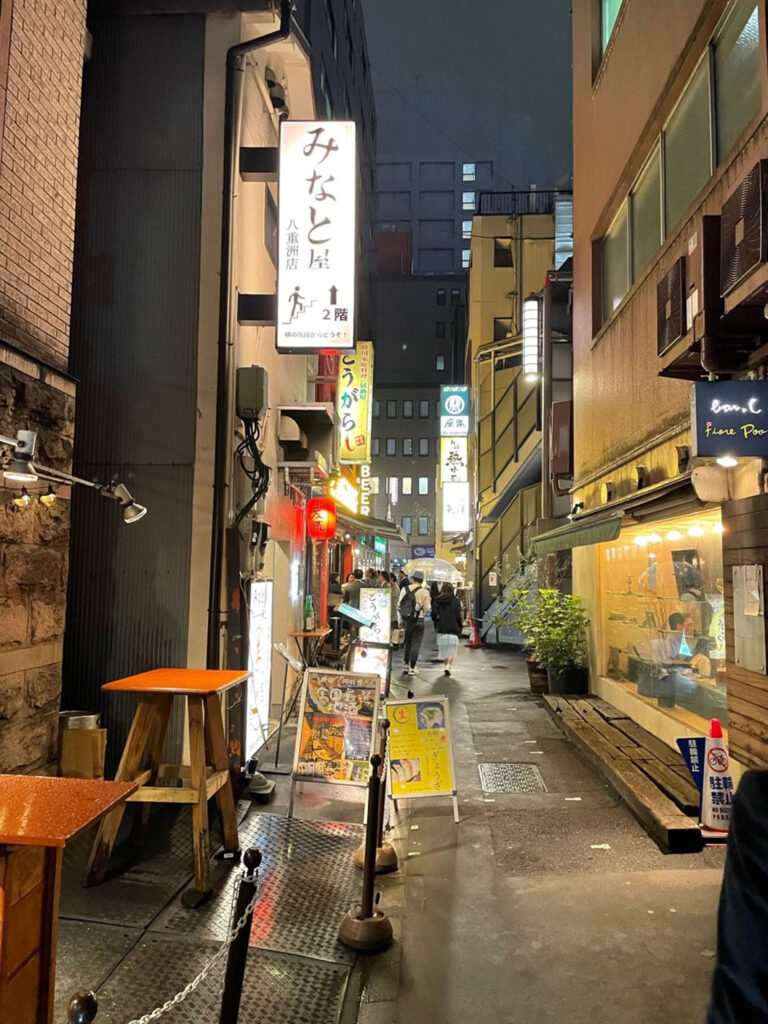
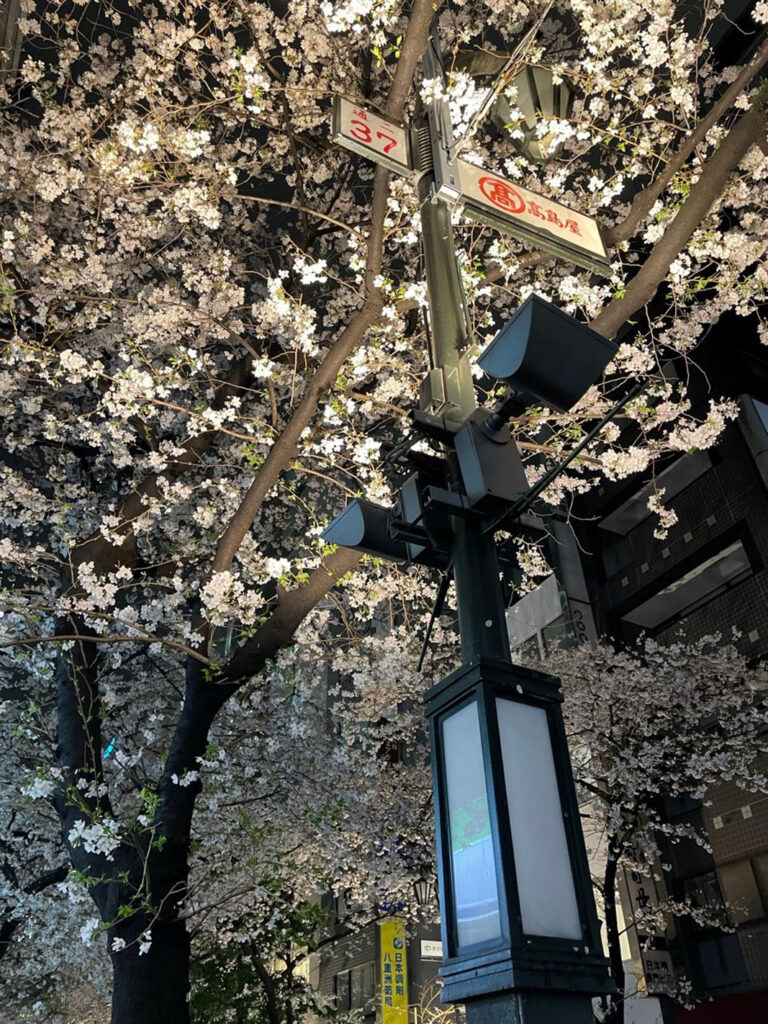
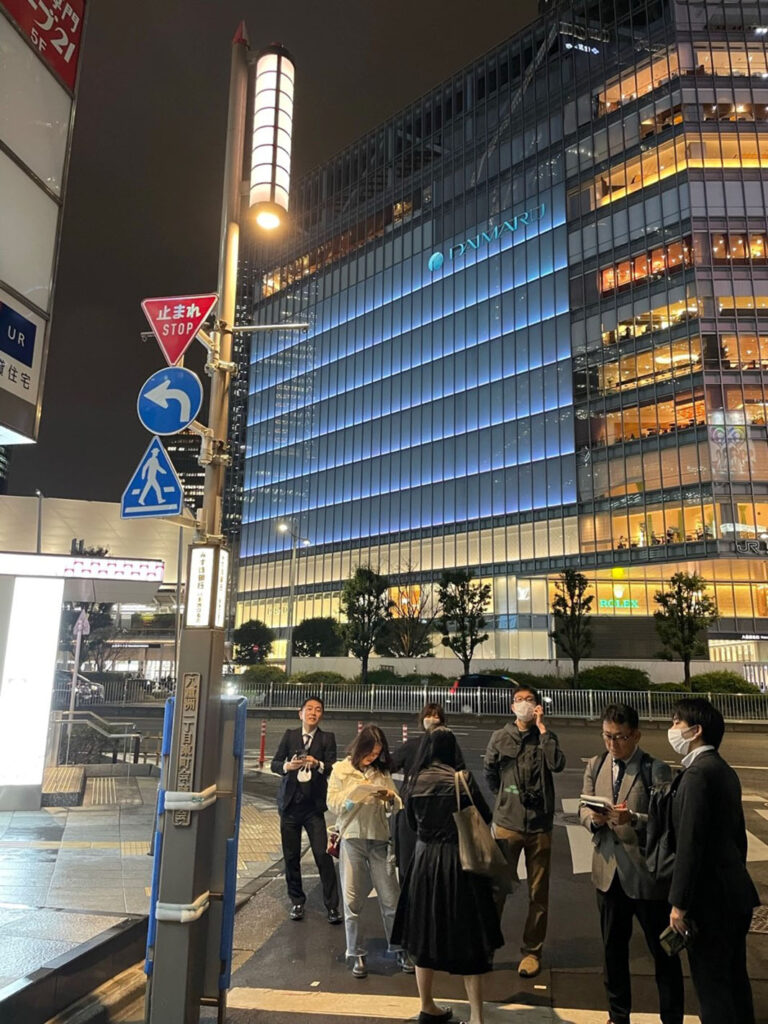
■ Group 2: Yaesu-Kyobashi Bridge
The second group walked around the area from Yaesu to Kyobashi Bridge. The lighting in a tavern on the way from Yaesu Book Center to Kyobashi Edogran was a typical example in Japan where the types of light bulbs and color temperatures were disorderly and just bright enough. It was a “villains” rating for what was a busy restaurant, which is a shame. While Kyobashi Edogran was designed with a lower color temperature overall, the escalator at the main entrance has a cold color and strong light. Participants commented, “It’s ruining the space.” What’s the point of insisting on an escalator?” Therefore, it was labeled as a villain. At Yaesu Midtown, we found a hero who looked like a Japanese person who was indifferent to lighting as the lights illuminating the wall surface reflected off the uneven wall material and created a waterfall. There was a fountain outside, so some people suggested that this might be a consistent expression of the staging theme of “water flowing.
At a construction site across from Yaesu Midtown, color-changing tape lights were used while monochromatic tape lights are usually used. The construction fence had “SDGs” written on it, and some people suggested that it might have been adopted to emphasize the SDGs. The winner was chosen as a hero because of the way the casual lighting gave meaning to the message rather than just using a display monitor to convey it.
Mr. Suzuki of the Honda Foundation explained to us that the height of buildings is regulated at 30 meters and that a dark place in the bright Yaesu district, with only a parking lot signboard light, is a rest area where tired working people naturally gather (whether it is good manners or not).
It was an enjoyable night walk survey through the city to “know, understand, and interpret the current situation of the city. (Amane Kotani)
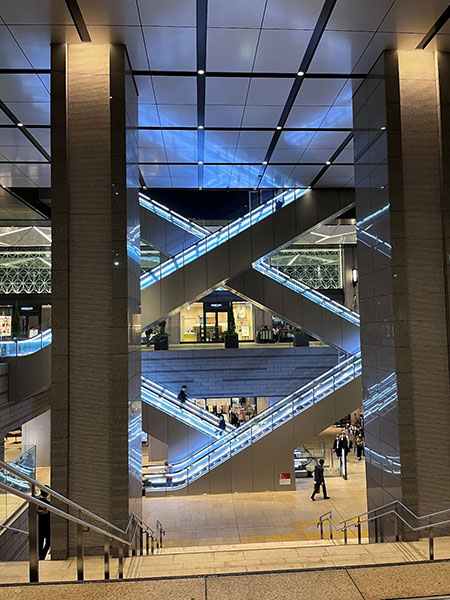
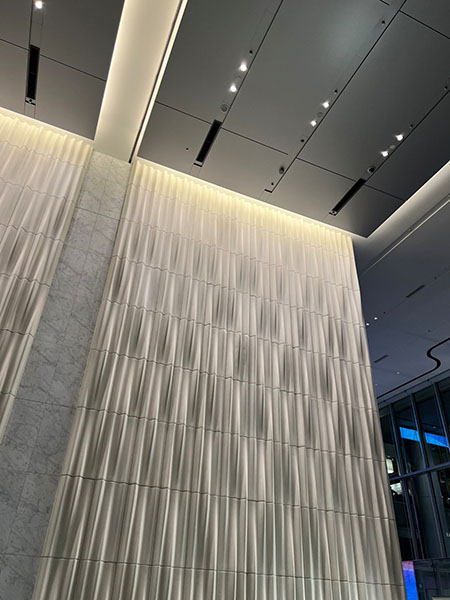
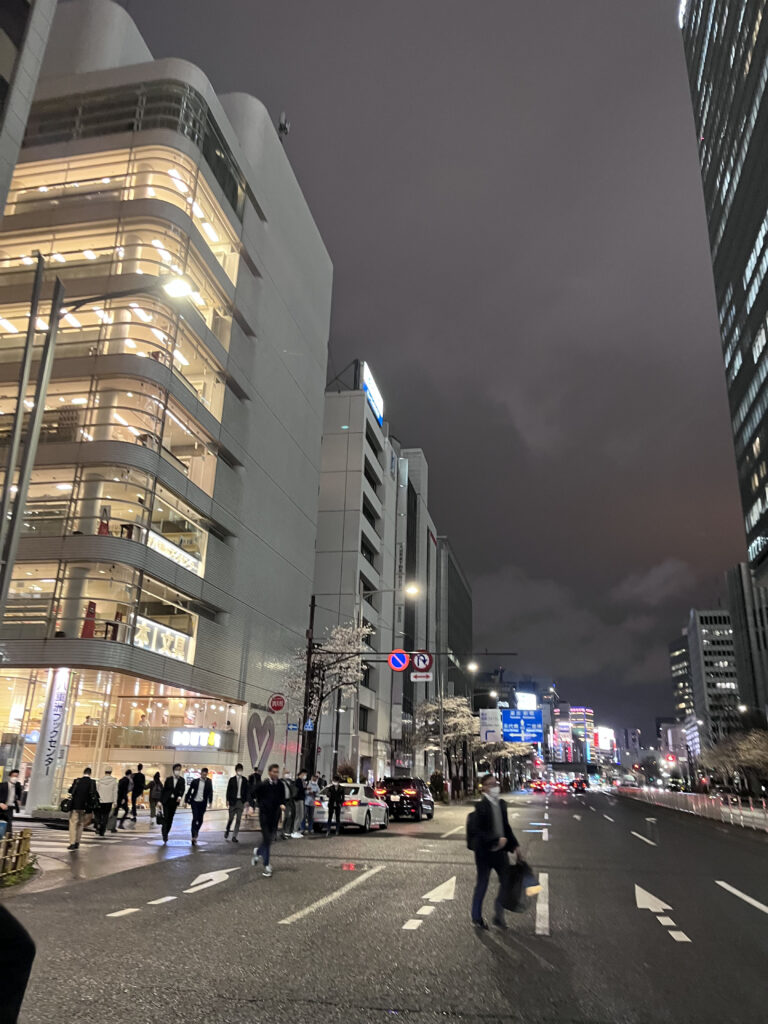
■ Group 3: Yaesu Underground Shopping Center Yaechika
Group 3 walked around the newly completed Midtown Yaesu and Yaechika, the Yaesu underground shopping mall.It was a Friday night and the cherry blossoms were in full bloom, so Yaesu was bustling with people at night, and it felt like the lively gateway to Tokyo had returned. The biggest villains found by Team 3 was the floodlights illuminating the Grand Roof, which caught our eyes when looking at Tokyo Station from the 5th floor hanging garden of Yaesu Midtown. The Grand Roof itself is nicely illuminated and has become an icon of the Yaesu Exit, but looking down from Midtown ruins the view from the high point. I don’t think that when the Grand Roof was first built, they did not envision the viewpoint from the high-rise building opposite, but I felt it was a waste of a very comfortable space with a great view.
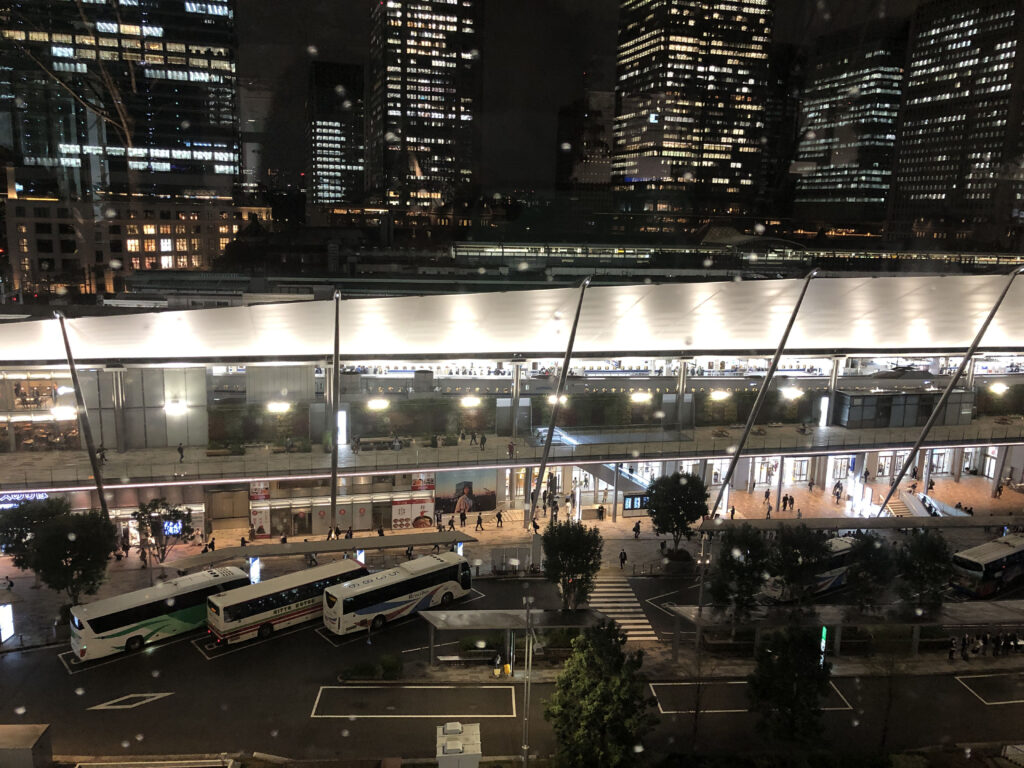
The plant-growing lighting in the Yanmar building atrium next to Midtown is the second villain. While this purple lighting may be essential for growing indoor plants, it was suggested that the lights could be turned on during unoccupied hours until the greenery grows and the fixtures are no longer visible.
In Yaechika, we found the remnants of a criminal. Looking up at the ceiling, we found a hole that was assumed to have contained compact fluorescent light bulbs lined up in various places. About 1/4 of them were now lit. Even so, the light was still too bright, at 1,200 lux. It is unimaginable to think how bright it would be if all the lights were on.
One of the heroes cited was the lighting of the hanging garden on the 5th floor of the Yaesu Midtown. The entire space was dimmed because of the light from the surrounding high-rise buildings, and the gentle foot lighting created a pleasant hanging garden. Many people said that the underground mall was villain in the common areas with its chiming downlights, but the vertical passageway became a hero because it was made up of only indirect lighting on the lines, making it a comfortable passageway without the oppressive feeling that is often associated with low ceilings and the glare of direct lighting.
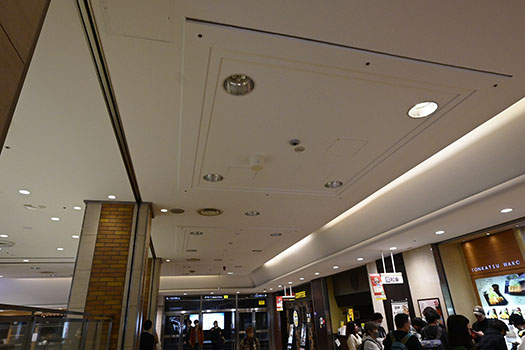
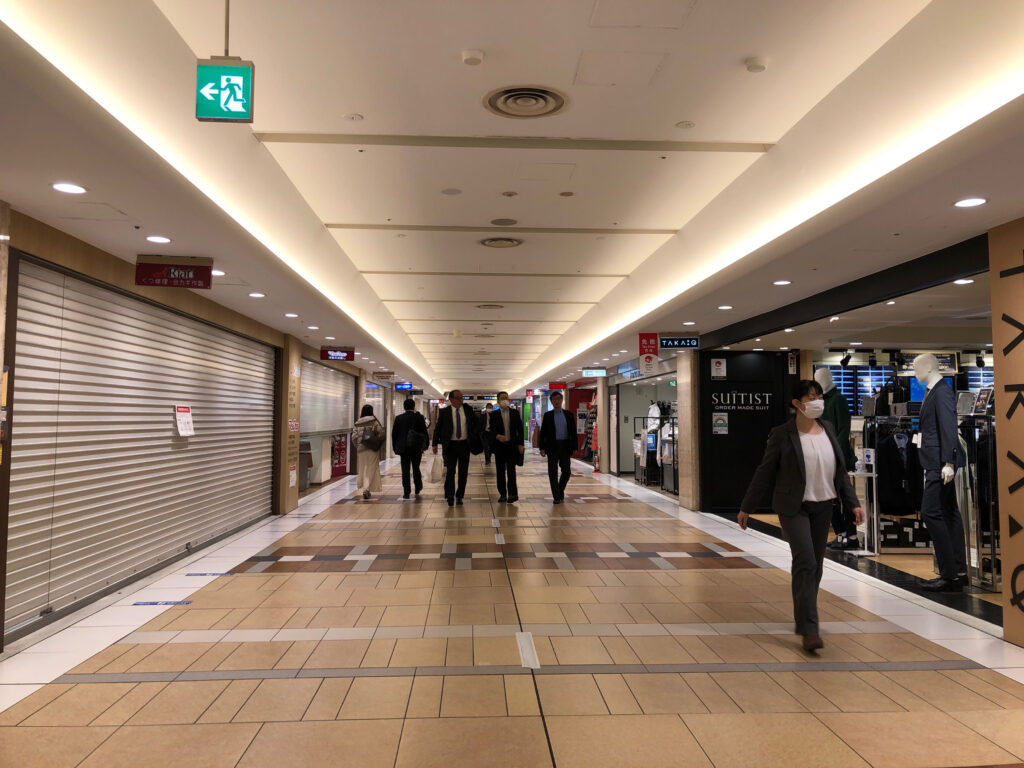
Although the weather was not good as it started raining heavily, we were able to enjoy the cherry blossoms in full bloom and the bustling Yaesu area. On the one hand, we were happy to see new buildings being completed and a sophisticated nightscape being created, but on the other hand, most of the participants probably wished that the lights of the red lanterns, which make you want to drop in on them, would remain forever. The fading scenery left us feeling a little sad as we walked through the town. (Noriko Higashi)
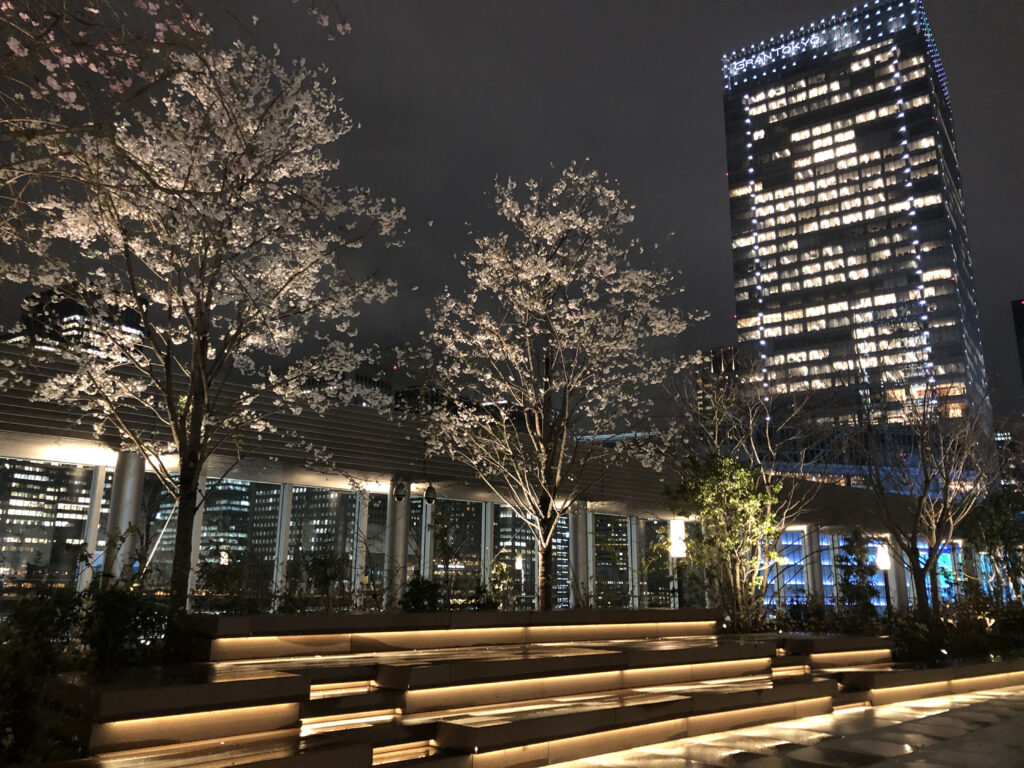
■Group Kansai : Otsu
This time, the group walked around the Otsu area in search of night views unique to the lake country, where Japan’s largest lake, Lake Biwa, and the Omi towns and nature surrounding it are woven together. The route took them from Biwako Hall to the Port of Otsu, walking along the lakeshore with a view of the opposite shore.
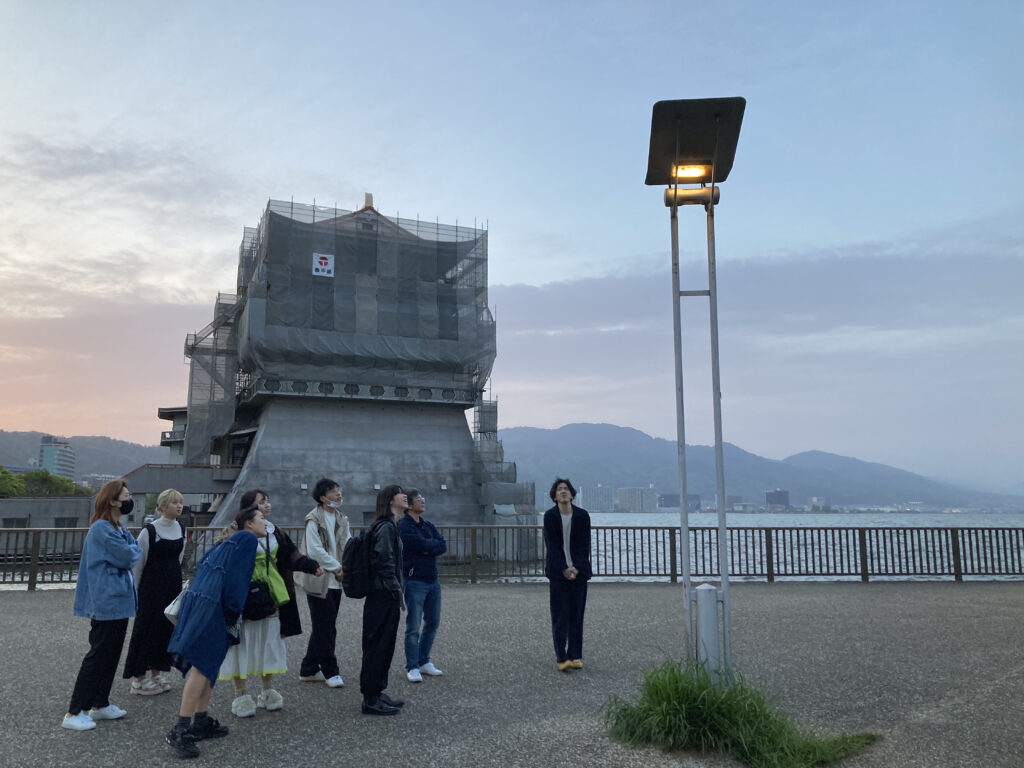
■Lighting on the horizon
After all, it is the largest lake in Japan, and it is rare to see such an expansive nightscape on the horizon. Unlike the ocean, the light is both near and far, a strange sensation. It was not as spectacular as the previous night walk survey in Kobe, but the lake gave me a sense of calmness instead of excitement.
■Pivoting lights along the shoreline
The road along the lakeshore was very dark and lonely due to the wide intervals between lighting installations. The lighting fixtures were well received with regard to design aspects, such as the spherical mechanics, somewhat reminiscent of a ship, and the ability to change angles by swinging the head. However, in our opinion, it was not streetlike, but rather violent, like a baseball night game where only brightness was needed. For the calm road along the lakeshore, a nostalgic sequence with a street-level design and warm colors would be a better fit.
As for the angle of the lighting, the fact that it only faced the road side and the Biwako Hall side was dark was well received by the adults, but we think it would be wonderful if there was a space where people could stay on the Biwako Hall side by illuminating it 360 degrees.
■Lake Biwa Floral Fountain
The Biwako Hana Fountain was a particular topic of discussion. It was lit up in poisonous colors of green and orange, and stood out among those mentioned as villains this time.
Suggestions for improvement from students
Inagawa: Some parts of the fountain look beautiful from certain angles. If it were illuminated in a single color, it would be beautiful from all angles.
Osakabe: The height and color of the fountain are different and there is no sense of unity. The colors should be matched.
Koizumi: The primary colors are too strong. Effects should be applied like projection with white light.
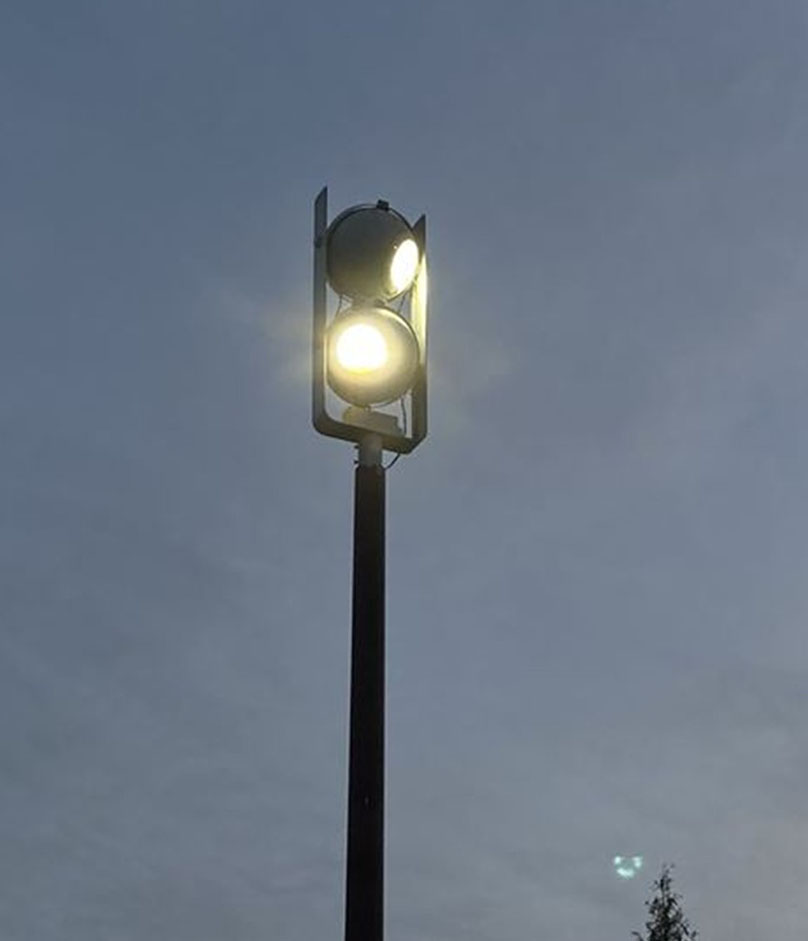
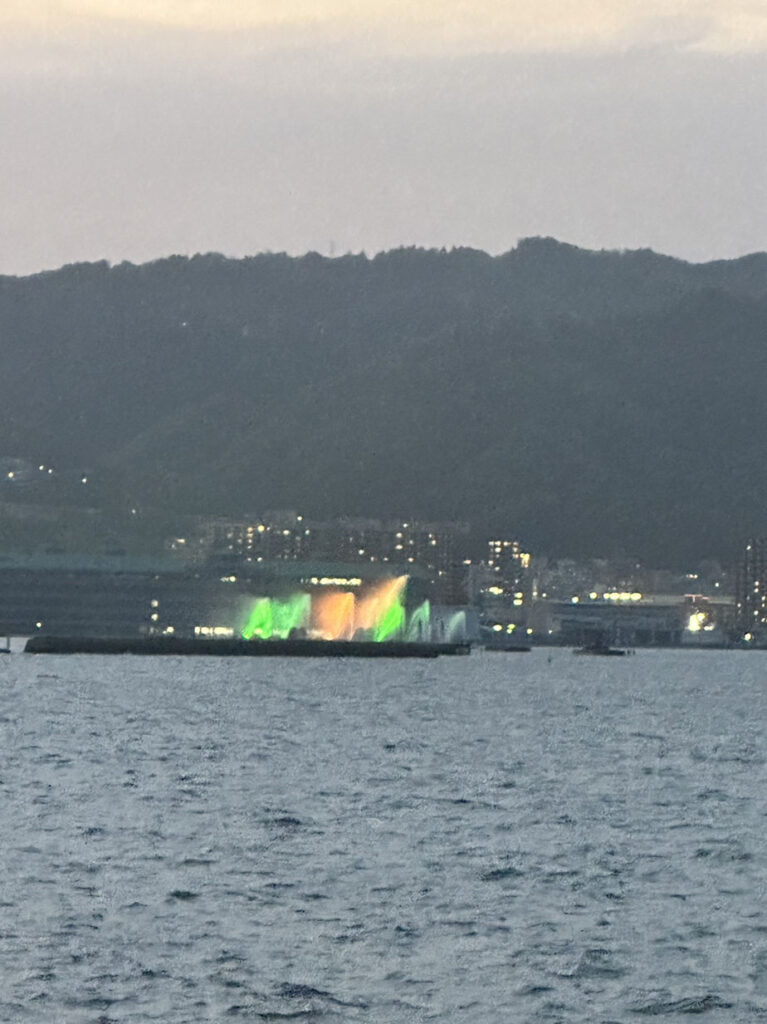
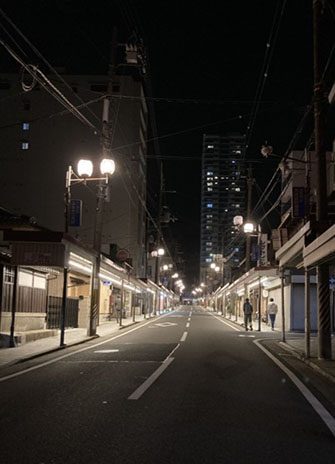
■Biwako Hall
Next is today’s main landmark, Biwako Hall. The light and dark spaces of the flow line are clearly defined, and the warm colors of the halogen lamps seem to match the relaxing atmosphere of Lake Biwa. However, it is regrettable that the halogen lamps are out in some places due to their short life span. Although it may not be intentional, the subtle unevenness of the wall tiles, which is not visible in the daytime, is highlighted by the lighting, creating a unique nighttime expression.
■Summary
This may sound like meddling, but it felt like that the roads along the lakeshore were generally dark and lacking in lighting, probably due to a lack of budget. As in any field, unless this bottleneck is eliminated, there is no place for design to play an active role. I think that designers will be required to be proactive in software from now on, without dismissing it as outside their field of expertise. (Shouya Koizumi, Moana Osakabe, Hina Inagawa)





